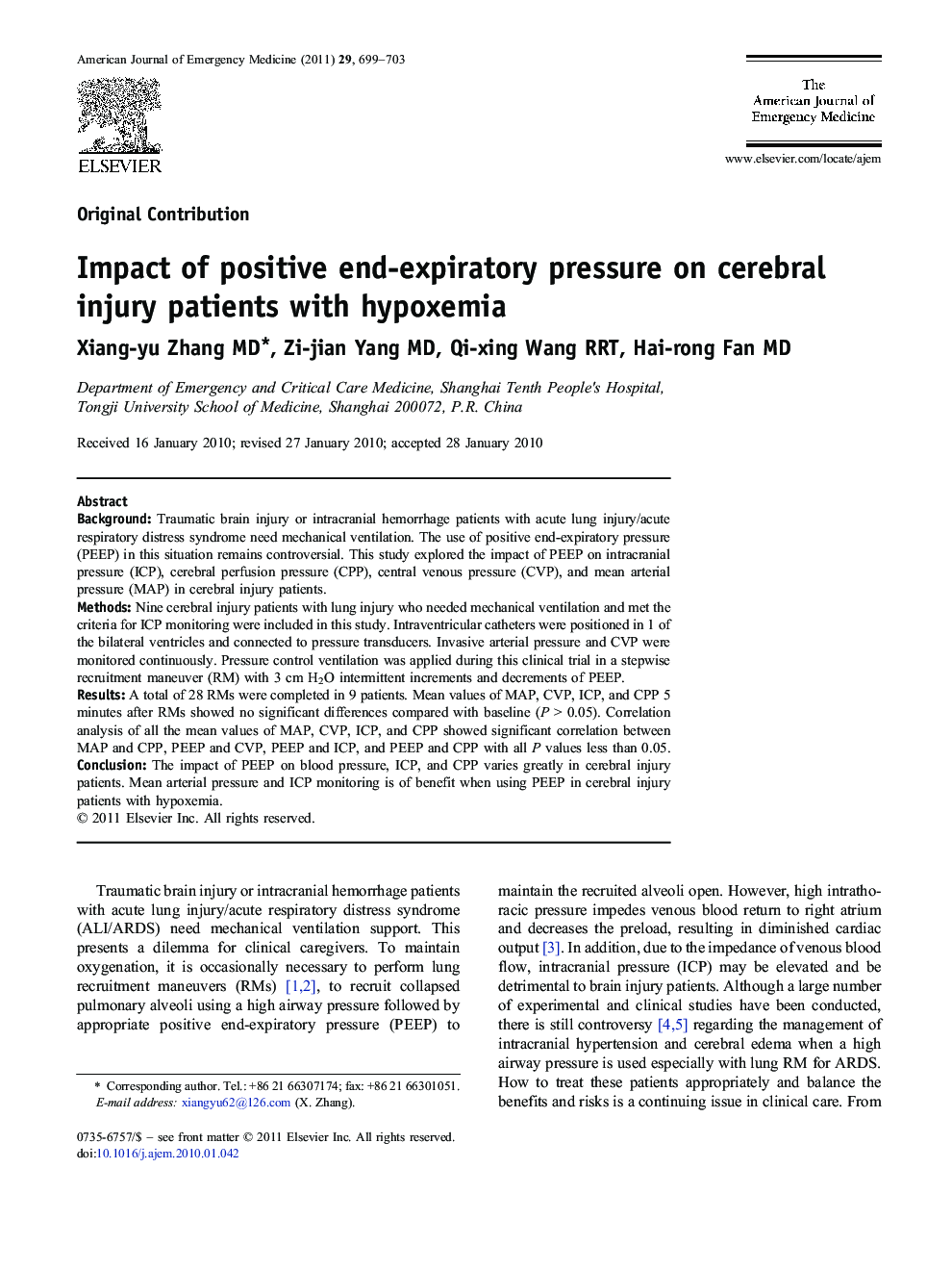| کد مقاله | کد نشریه | سال انتشار | مقاله انگلیسی | نسخه تمام متن |
|---|---|---|---|---|
| 3226078 | 1588146 | 2011 | 5 صفحه PDF | دانلود رایگان |

BackgroundTraumatic brain injury or intracranial hemorrhage patients with acute lung injury/acute respiratory distress syndrome need mechanical ventilation. The use of positive end-expiratory pressure (PEEP) in this situation remains controversial. This study explored the impact of PEEP on intracranial pressure (ICP), cerebral perfusion pressure (CPP), central venous pressure (CVP), and mean arterial pressure (MAP) in cerebral injury patients.MethodsNine cerebral injury patients with lung injury who needed mechanical ventilation and met the criteria for ICP monitoring were included in this study. Intraventricular catheters were positioned in 1 of the bilateral ventricles and connected to pressure transducers. Invasive arterial pressure and CVP were monitored continuously. Pressure control ventilation was applied during this clinical trial in a stepwise recruitment maneuver (RM) with 3 cm H2O intermittent increments and decrements of PEEP.ResultsA total of 28 RMs were completed in 9 patients. Mean values of MAP, CVP, ICP, and CPP 5 minutes after RMs showed no significant differences compared with baseline (P > 0.05). Correlation analysis of all the mean values of MAP, CVP, ICP, and CPP showed significant correlation between MAP and CPP, PEEP and CVP, PEEP and ICP, and PEEP and CPP with all P values less than 0.05.ConclusionThe impact of PEEP on blood pressure, ICP, and CPP varies greatly in cerebral injury patients. Mean arterial pressure and ICP monitoring is of benefit when using PEEP in cerebral injury patients with hypoxemia.
Journal: The American Journal of Emergency Medicine - Volume 29, Issue 7, September 2011, Pages 699–703